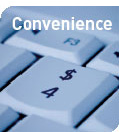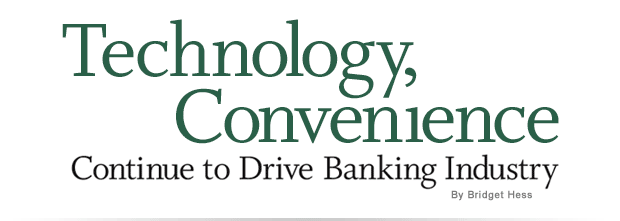As part of our quarterly report on the banking and finance industry, Ingram’s spoke with several Kansas City bankers to inquire what they anticipate 2007 will hold. We asked them about national and local trends, new or enhanced bank products and services, what the primary focus for their companies will be in the first quarter of 2007, and the current competitive landscape for bankers.
In order to be profitable in today’s environment, banks can’t simply hang their hats on loans and deposits but must also innovate new services. And while local bankers agree that the Midwest tends to experience less volatility than on the coasts, local banks can still feel the effects of trends such as the current slowdown in the housing market and the low interest rates of recent years.
“At the national level, it is a competitive banking environment. There are still a lot of available funds because of the slowdown on capital investments recently. Banks are now chasing this money, and Kansas City reflects this trend,” said Marc Maun, Chairman and CEO of Bank of Kansas City, a subsidiary of BOK Financial Corporation based in Tulsa, Okla. “The housing market is an issue on the coasts but not as big of an issue in KC. Kansas City has cycles, but they don’t tend to be as volatile as some of [BOK’s] other markets.”
Today’s bankers must respond to the demand for more electronic functions in an environment where industry regulations and data security issues often make these functions challenging to provide. There is also increased competition despite a barely growing customer pool and pressure to provide more and more services for free. With all of this to contend with, banking is becoming a more complex business. In talking with local bankers, we found that there are four major themes currently playing a role in the industry: convenience, technology, competition and value-added services.

In an environment where fewer and fewer customers have the time and interest to sit down with a banker face-to-face, like in so many other industries convenience has become the name of the game. For example, Bank Midwest puts branches inside Super Wal-Mart stores. Tim Thomas, Executive Vice President of Retail Banking for Bank Midwest, calls these branches “convenience driven,” as they have longer hours and offer customers a quick way to conduct banking business while doing their shopping. The concept of in-store banking centers is not new but continues to be a common strategy.
Online banking and other electronic-based functions are also an increasingly important way bankers can provide convenience and flexibility for customers. While this percentage is higher than national averages, one local bank, Bank of Blue Valley, reports that about 60 percent of its customers are now signed up for online banking.
In the case of some customers, often the only time they come into the bank is to open a new account—and some customers may opt to do this online as well. Even though the focus seems to be shifting toward electronic banking, banks still must juggle that with continued emphasis on brick-and-mortar locations for customers who prefer a face-to-face experience, making the opportunities to bank abound.
“One of the conundrums of this business is that it was thought bricks and mortar would not be needed and it would be all mouse clicks,” said Bob Regnier, President of Bank of Blue Valley. “Customers will look at your product line and rates online, and if you don’t have an attractive and well-designed electronic site you won’t get their business. But, they still want to do some face-to-face.”

Bankers are investing big dollars in continually up-grading and enhancing their electronic services. One new offering is the ability for commercial customers to process payments using digital images of checks they send to the bank rather than making a trip to the teller. Many banks have recently launched or are currently working to roll out remote deposit products for commercial customers. Bank of Blue Valley calls it “deposit IT.” INTRUST Bank calls it “remote capture.” Though the names vary, this capability is similar from bank to bank, allowing commercial customers to send a digital image and avoid a physical trip to the bank— cutting down the time it takes to pay or receive payment for a bill.
“This will completely change the way people collect payments. This is all about taking the cost out of banking for our customers,” said Kevin Barth, President and Chief Operating Officer of Commerce Bank, Kansas City, who mentions that a big point of Commerce’s current contact with small business customers is currently at the drive-up teller, which will be eliminated by the new remote deposit function.
The movement toward remote deposit can be attributed not only to customer demand and banks’ desire for efficiency but also to the Federal Reserve and Check 21 legislation. The Check Clearing for the 21st Century Act allows a digital image to legally substitute for the original paper check, eliminating the need for a paper check to physically travel between financial institutions and making checks clear more quickly. This legislation stems in part to planes being grounded on September 11th, which resulted in an interruption in check processing.
“Check 21, which says an image is as good as the real thing, has helped drive some of the technology changes, but so has finding efficient ways to process payments so banks can remain relevant in the payment system,” said Mike Maddox, Regional President of INTRUST Bank.
«January 2007 Edition
